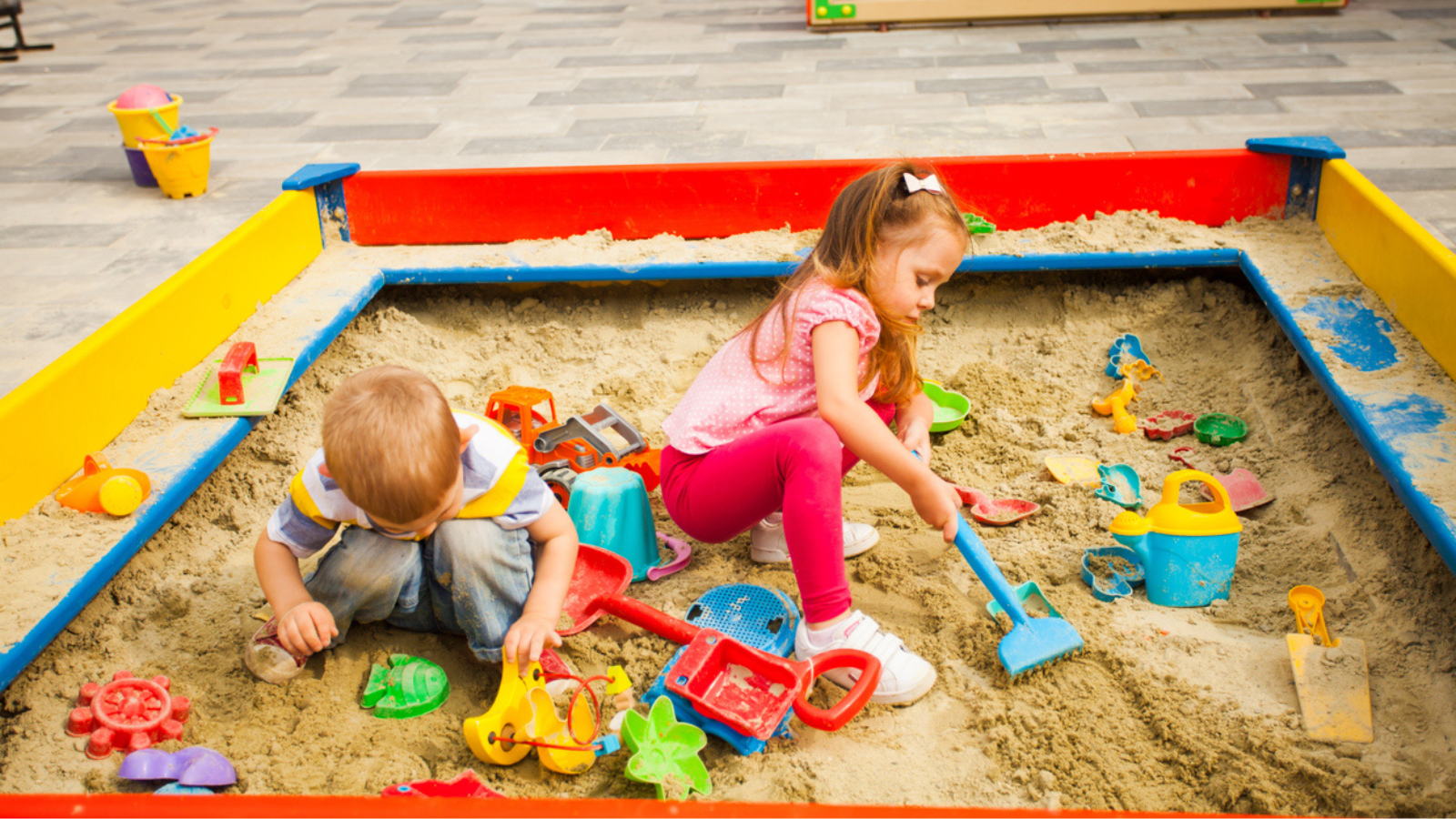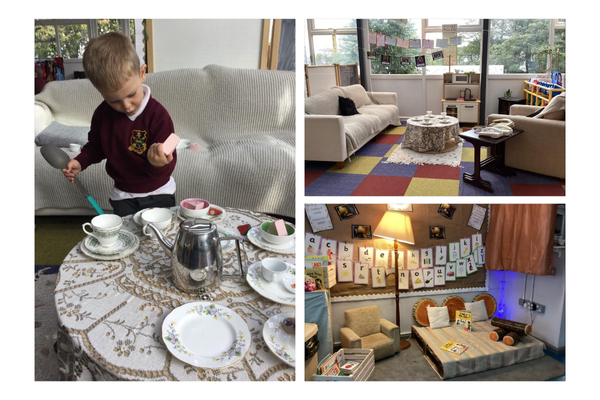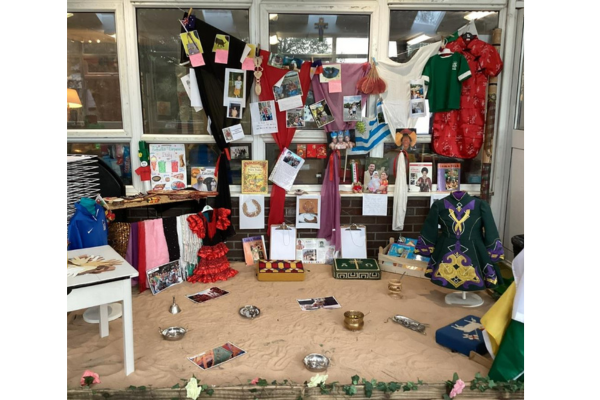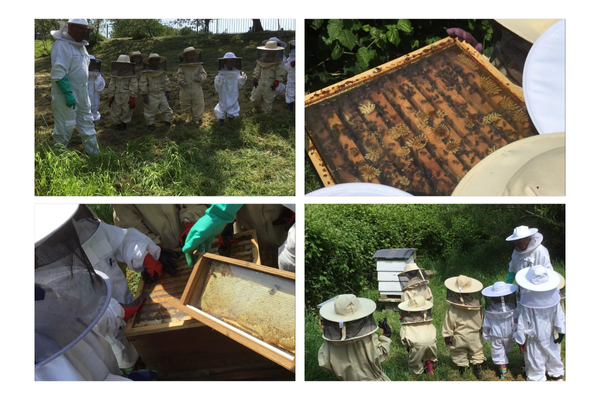High quality learning experiences

Quick links:
Information about the school
St Mary’s Catholic Primary is a caring school that places the community at the heart of its work. Approximately half the pupils begin school with literacy and numeracy skills below age related expectations, however within a very short time, due to a wide range of rich learning experiences, the youngest pupils make strong progress. Nearly all pupils, including those who are eligible for free school meals (eFSM), those who have additional learning needs (ALN), and those who have English as an additional language (EAL), make strong progress as they move through the school. By the time they leave, nearly all pupils achieve well across most areas of the curriculum.
Context and background to the effective or innovative practice
In September 2021, the school decided to make key changes to its early years provision, merging the nursery and reception classes into one early years setting called the ‘Atelier’. The school continuously monitors, reviews and reflects on its early years practice to ensure that there is a positive impact on children’s well-being and learning. This process allows the school to be innovative in the way it established and developed the school’s Early Years’ Atelier.
This has involved:
- A process of in-depth investigation about excellent Early Years practice from settings around the world. This included wide reading and research on the theme, including looking into ‘The Curiosity Approach’ and ‘The Reggio Emilia Approach’, balanced with the Curriculum for Wales.
- A period of reflection and consultation that resulted in the structure that is now in place.
- Investment in both the physical environment and in the training of a team of staff to allow the effective implementation of the new approach.
- Reflecting on the wide range of research to arrive at an approach that allows all pupils to operate within their zone of proximal development (ZPD) regardless of their age.
Description of nature of strategy or activity
The Atelier is a mixed Nursery and Reception setting that ensures learning is aimed at each child’s stage of development, not their age. It provides learners with rich learning experiences that develop curiosity and independence. It has extensive indoor and outdoor learning areas for all children to access to develop their curiosity, independence, problem solving and ability to collaborate. Teachers’ planning of rich learning experiences for our pupils substantially enhances their ability to take risks, grow in confidence and be ambitious about their learning.
The indoor environment has a number of stations that allow pupils to have rich learning experiences. For example:
- The Well-being Check in Station – The pupils ‘check-in’ when they arrive at school in the morning and they are given the opportunity to express how they are feeling. Adults are able to touch base with pupils who may be upset.
- The Play-dough Station provides invitations and opportunities to inspire thought and mindful intentions. Pupils are encouraged to make their own play-dough and use resources from other areas in the setting, giving children choice and developing independence.
- The Loose Parts Station is an open-ended resource area which excites all senses. This includes synthetic or natural items to allow children to use in many ways and combine with other loose parts through imagination and creativity.
- The Home Corner provides a ‘home from home’ environment allowing children to experience real life items that are commonly found within the home, for example a real China tea set. This promotes the children’s social, emotional and well-being development. Children are encouraged to role play from their own first-hand experiences supported by the enabling adult.

- The Creative Station provides opportunities to promote curiosity, investigation and discovery, allowing children the freedom to express themselves.
- The Cultural / Cynefin Area celebrates pupils’ cultural differences and helps pupils to recognise that they belong to a rich and diverse school community.

- The Investigation Sand Area is a large, low-level sensory sand pit area in which children take off their shoes and socks independently and explore and investigate resources linked to the domain. They have extended time and open-ended opportunities to create and develop.

There is low level lighting and a calm atmosphere in the Early Years’ Atelier. This supports the children to settle into their learning quickly, concentrate well and avoid distractions as they complete their tasks. Children explore the learning environment confidently and move between the different areas purposefully, making choices and developing independence.
The practitioners to ensure that the needs of the children are met by observing them in the environment, and ‘noticing, analysing and responding’ to their thinking and learning.
The outdoor learning environment provides opportunities for younger pupils to learn with older pupils. Staff maximise the use of the school’s outdoor learning areas and the locality to offer authentic learning experiences to pupils. Teachers’ skillful use of the outdoors enriches learning.
For example:
- The apiary allows pupils to learn about and experience bee-keeping. Children harvest honey to sell to the school community, developing entrepreneurial skills.

- The allotment area allows pupils to experience planting and growing vegetables and children use the vegetables to cook healthy meals and sell to the school community.

- The conservation area is a particular strength because of the way in which pupils learn to move around the woodland area safely using their balancing and climbing skills whilst developing fine and gross motor skills. There is a pond in the woodland area which gives children the opportunity to experience pond dipping and to investigate different plants and habitats, enhancing learning across the curriculum. Forest school learning takes place in the conservation area, providing learner inspired, hands on experiences in a the natural environment. It supports children to build confidence as they problem solve and learn to manage risks.

What impact has this work had on provision and learners’ standards?
The school has seen children progress rapidly through the Atelier in all areas of learning, instilling the foundations for future learning. The impact on children’s well-being has been profound and this is evident from the way the children in the setting moving around in a purposeful manner. The transition from nursery to reception is calm and smooth for the children.
The school has been innovative in the way it has established and developed the school’s Early Years’ Atelier. As a result,
- Excellent provision is in place.
- There is a high level of staff expertise. Staff are enabling adults who can gauge when to help and support the pupils learning and development.
- The Atelier is able to target provision effectively at each individual child’s stage of development.
- Children have opportunities to plan and have ownership of their learning.
How have you shared your good practice?
The school operates an open-door policy for visitors to see the Atelier and a number of schools have visited to see how it has been implemented.